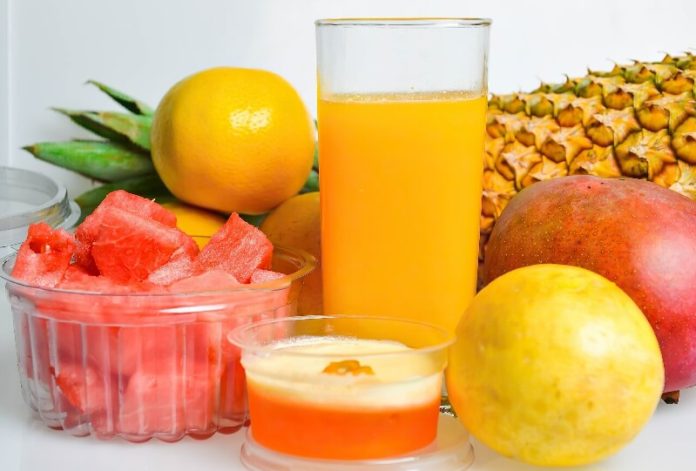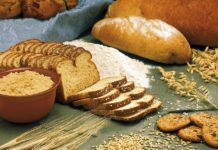One of the best ways to help you lose weight is to add more fresh fruits into your daily diet. Fruits are rich in essential nutrients that the body needs to stay healthy. They have high fiber content which may help one lose weight.
Listed here are the best fruits for weight loss.
Grapefruit
This fruit is a cross between an orange and a pomelo and is usually associated with weight loss and dieting. In fact, one-half grapefruit has 39 calories, providing 65% of the RDI (reference daily intake) of vitamin C. Red grapefruits gives 28% RDI for vitamin A.
In addition, grapefruit has a low glycemic index or GI. It means that grapefruit releases sugar into your blood more slowly. This may result in weight loss and it allows you better manage your weight.
You can add your grapefruit to your healthy salad.
Apples
Everybody knows the old adage about apples and doctors. Apples indeed keep the doctors away because of the fruit’s many health benefits.
Apples provide low calories, yet have a high fiber content. A large apple may contain about 5.4 grams fiber and 116 calories. Low calorie fruits tend to be more filling. Hanger pangs throughout the day when add an apple to your breakfast. Interestingly enough, a single apple is about three times as filling as your favorite chocolate bar.
They are best eaten whole rather than juiced, to help reduce hunger and control your food cravings.
Berries
Berries are commonly known as “low-calorie nutrient powerhouses”. A cup of strawberries only has 50 calories and gives 3 grams dietary fiber. It also gives you about 150% of the RDI for vitamin C and 30% of the RDI for manganese.
Berries make you feel fuller, so food cravings are lessened. In addition, berries help decrease cholesterol levels, lower inflammation, and regulate blood pressure.
Both fresh and frozen berries can be blended to make a healthy smoothie or added to your breakfast cereals. You can even mix them into your sugar-free baked goods. You can also mix them with your yogurt or add to your salad.
Stone Fruits
Also referred to as drupes, these are a group of seasonal fruits that have a fleshy exterior and a pit (or stone) inside. These include nectarines, peaches, apricots, plums, and cherries.
These fruits are low-calorie, low-GI, and rich in important nutrients like vitamins A and C. They are ideal for people who are trying to lose weight.
For example, one cup of cherries may contain 87 calories, a medium peach has 58 calories, or four apricots only have 60 calories.
Stone fruits are healthier alternatives to unhealthy snacks like sweets, cookies, pastries, or chips. And they are more filling.
They are best eaten fresh. You can mix them into your porridge or make a fruit salad. You can even grill them or use them as ingredients to your savory dishes.
Passion Fruit
Passion fruit is abundant in South America. It grows on a beautiful, flowering vine. Passion fruit has a touch outer rind which can be yellow or purple in color. Inside, there is an edible, purple see mass.
A single serving (one piece) of passion fruit only has 17 calories. It has high fiber content, vitamins A and C, potassium, and iron. Passion fruit is also packed with dietary fiber. About five passion fruits may give about 42% of RDI for a little less than 100 calories. Dietary fiber helps slow down the digestive process, thus making you fuller longer and helping control your food cravings.
The seeds contain piceatannol. It is a substance that helps in maintaining your blood pressure to normal levels. It also helps improve the body’s sensitivity to insulin in obese men, though this still needs further research and analysis.
When trying to lose weight, consume passion fruit whole. You can eat it as is or add to your drinks, or as topping or hearty filling to your desserts.
Rhubarb
Actually, rhubarb is a vegetable, however, in North America and Europe, it is considered a fruit.
Rhubarb contains only 11 calories for every stalk. It is also packed with almost a gram of dietary fiber and 20% of the RDI for vitamin K.
Rhubarb has a high fiber content which may aid in the reduction of high cholesterol, a common issue for people who struggle with their fluctuating weight.
There are a lot you can do with rhubarb. You can add it to your stew or porridge. You can even eat it with your breakfast cereals.
Kiwi Fruit
Kiwi fruits are small and colored brown. Inside the fruit there is a yellow or bright green flesh and very tiny black seeds.
Kiwi fruits are good sources of vitamin C, vitamin E, fiber, folate. Kiwi has low GI, while kiwis contain sugar, it is immediately release, thus ensuring that you will have smaller blood sugar spikes.
These fruits are packed with dietary fiber.
A small and peeled kiwi has more than 2 grams of dietary fiber.
Obese people who are tying to lose weight eat a lot of kiwi fruits because its high dietary content, thus promoting weight loss, improved gut health, and overall well-being.
Melon
Melons have high water content and have low calories, making them a favorite staple in someone’s daily diet routine. A cup of melon (like watermelon and honeydew) may contain 46 to 61 calories.
Melons are rich in dietary fiber and are low in calories. The also contain potassium, vitamin C, lycopene, and beta-carotene.
These also make you fuller longer because of its high water content.
These fruits are best eaten fresh. You can add them to your fruit salad. Melons are essentially easy to cook. Everyone needs some smoothies and frozen popsicles.
Oranges
If you’ve notice, most on the list are citrus fruits, this just means that oranges may be able to help in the finding of cure or vaccine for this condition.
Similar to other citrus fruits, melons have low cholesterol levels, high vitamin C content, and fiber. Melons make you feel fuller longer.
If trying to lose weight, add oranges to your salad or dessert.








